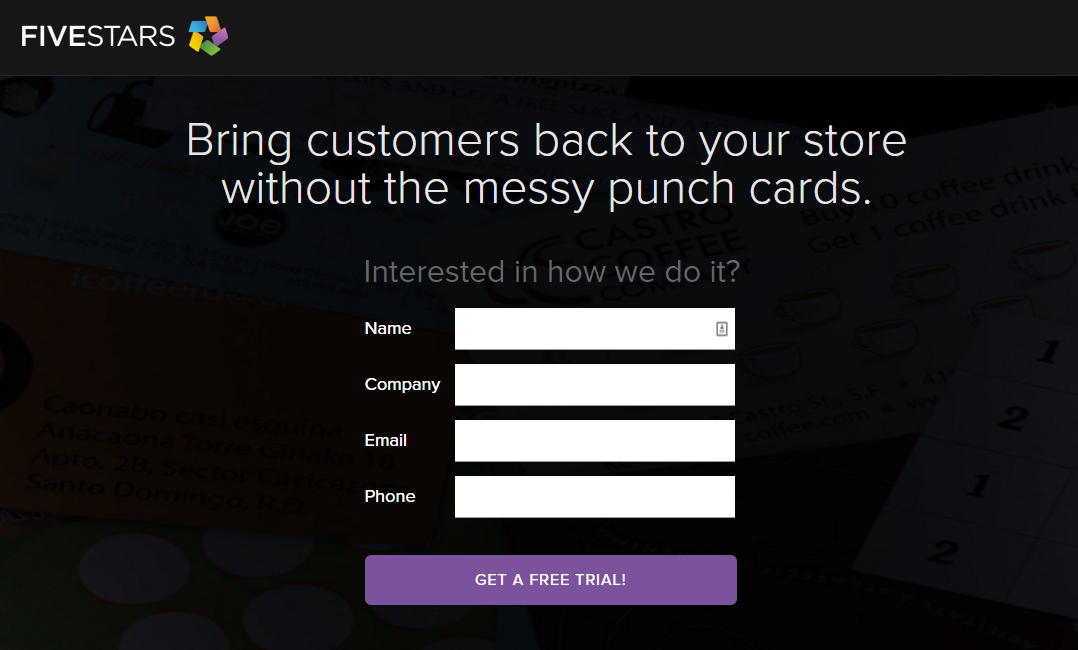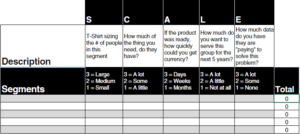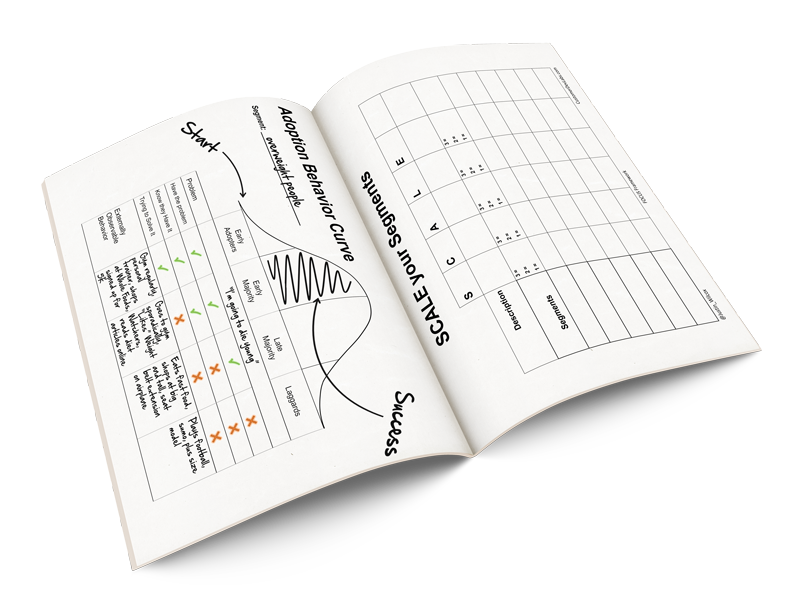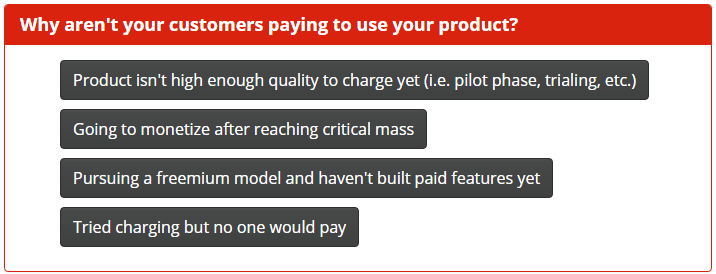The first step in finding Product Market Fit is to define it. Let’s start by answering the question: What is Product Market Fit?
The term was first coined by Mark Andreesseen. To him, Product Market Fit meant:
“being in a good market with a product that can satisfy that market.”
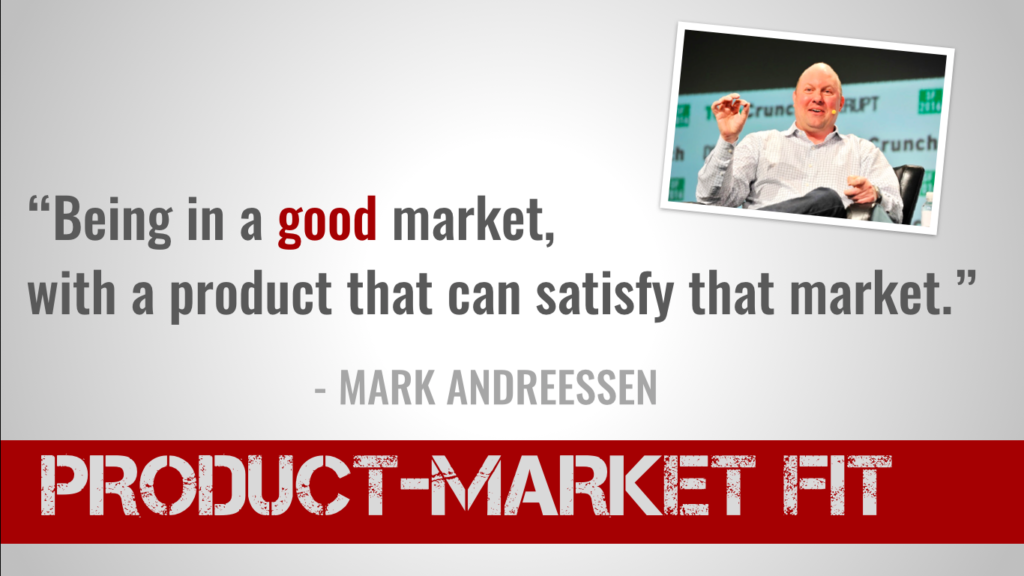
It’s a helpful starting point, but it leaves some unanswered questions. For instance, what does “being in a good market” mean?
The phrasing is intentionally vague because a “good market” means something different for me than it does for you. After all, each of us is starting our companies for different reasons.
While Andreesseen coined the phrase, you get to determine what it means for you.
How do you define your Product Market Fit?
I’m going to give you a 3-step process to determine what Product Market Fit means to you, so that you can go out and get it.
- Start at the end. You have to know where you’re headed in order to get there. First, we need to define where you want to go.
- Find the path to get there from where you are right now.
- Make that path measurable.
Step 1: Start at the End
Starting with the end in mind, you have to define what a successful entrepreneurial journey looks like for you.
Can you imagine what your success looks like? If not, here’s a quick exercise to help illuminate your why.
Exercise: What does success feel like?
I want you to close your eyes and imagine what it will feel like when you become a successful entrepreneur. I want you to dive deep into the emotions you feel when you imagine yourself as successful. Do you feel…
- Pride?
- Accomplishment?
- Security?
- Freedom?
- Gratitude?
- Something else?
Whatever it is I want you to write down your feelings when you imagine your future self as a successful entrepreneur.
This simple visualization tells you exactly why you’re starting your company.
You’re starting a company so you can feel those “success feelings.”
Step 2: Find the Path
Congrats! You’ve already taken the first step to finding your path to success. Ultimately, those feelings are at the end of your entrepreneurial rainbow—feelings like financial and job security, wanting to have an impact.
Whatever your feelings are, that’s what Product Market Fit should help you accomplish.
Your unique definition of Product Market Fit is being in a market that enables you to achieve your success feelings.
Now you need to find those markets where you can achieve those feelings. To do that, you need a way to measure your progress towards achieving them.
Step 3: Measure Your Path
Whatever feelings arose when you imagined yourself as a successful entrepreneur, you need to turn them into measurable metrics. This way, you can track if you’re headed towards Product Market Fit.
Here are some examples:
- If financial security is one of your success feelings, what amount of money is going to give you that feeling? Is it a certain amount of income per month? Or a certain amount of salary? Or a certain amount of revenue your company generates?
- If impact is one of your success feelings, what number of customers served is going to give you a sense of impact? Or is there a certain number of people you’ve helped employ in your company?
Let’s use these metrics to create your unique and actionable definition of Product Market Fit. To do this, fill in the blank below with your success metrics.
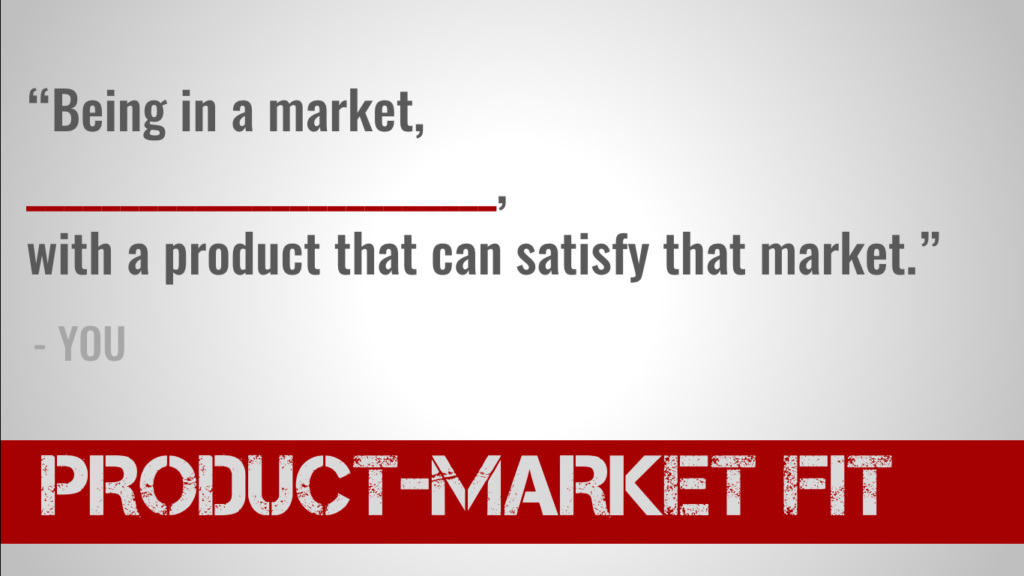
Here are a few personalized examples.
Product Market Fit means to me…
- “Being in a market, that makes me $1M income annually, with a product that can satisfy that market.”
- “Being in a market, where I serve 1K people, with a product that can satisfy that market.”
- “Being in a market, where I create 100 jobs, with a product that can satisfy that market.”
This is a definition of Product Market Fit you can act on, and it gives you valuable feedback because it points you in the right direction. As you make decisions about your company, you’ll use this definition to determine the best way to achieve Product Market Fit.
What’s Next
You’ve taken the most important step in achieving Product Market Fit, defining it for yourself. The FOCUS Framework can help you take Product Market Fit even further.
- Your co-founders. How do you get everyone on the same page and moving in the same direction?
- When life changes. How do you adapt your Product Market Fit definition as things change?
- Increase your likelihood of success. How do you increase your odds of actually achieving it?
If you want extra help, take a look at the Declaring Victory worksheet. It’s the first exercise in the FOCUS Framework workbook series.
In this exercise, you’ll learn how to define Product Market Fit step by step, both now and in the future, with or without co-founders, and most importantly, how to increase your odds of achieving it.
Now you know what Product Market Fit means for you…


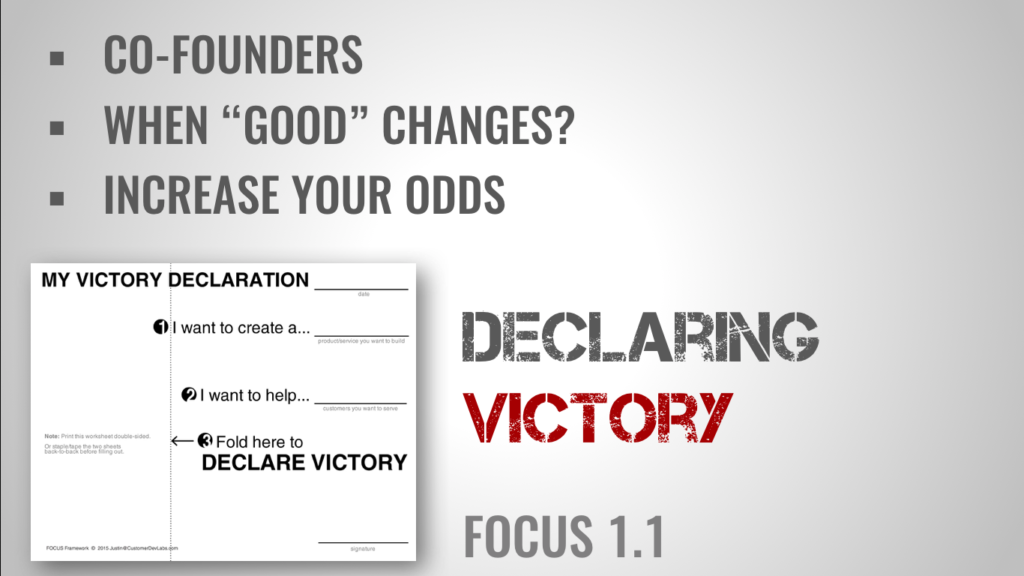





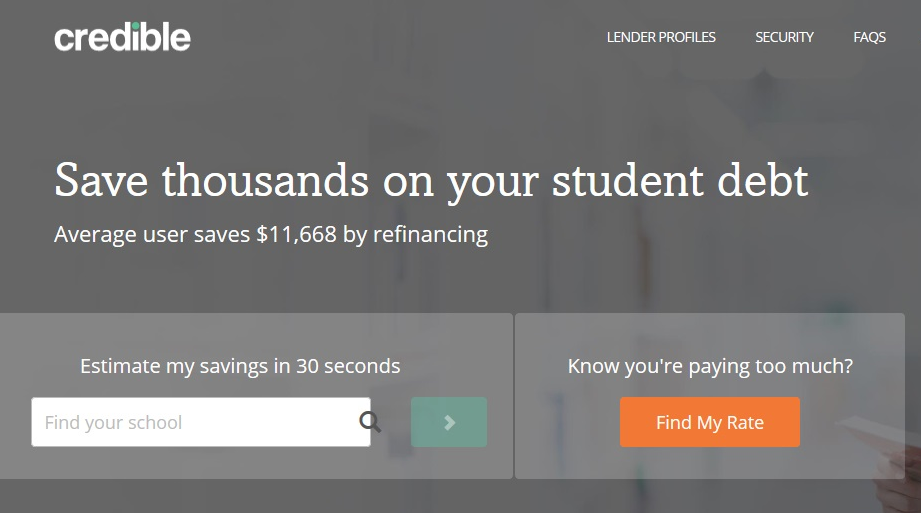
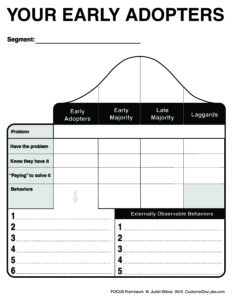
 Flying cars are an amazing idea, and have existed for decades – so why don’t we use them?
Flying cars are an amazing idea, and have existed for decades – so why don’t we use them? Start by solving a single segment’s problems. Solve that small segment’s problems in an incredible way. That small segment will help spread the word and tell your next segment, which will help spread the word with your next segment.
Start by solving a single segment’s problems. Solve that small segment’s problems in an incredible way. That small segment will help spread the word and tell your next segment, which will help spread the word with your next segment.